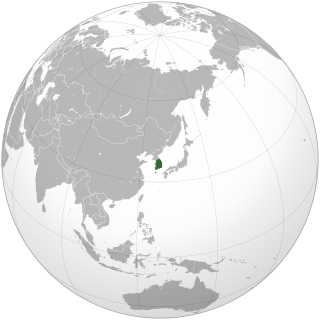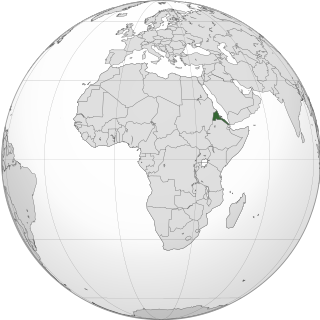Related Research Articles

Lesbian, gay, bisexual, and transgender (LGBT) people in the Islamic Emirate of Afghanistan face severe challenges not experienced by non-LGBT residents. Afghan members of the LGBT community are forced to keep their gender identity and sexual orientation secret, in fear of violence and the death penalty. The religious nature of the country has limited any opportunity for public discussion, with any mention of homosexuality and related terms deemed taboo.

Lesbian, gay, bisexual, and transgender (LGBT) rights in Australia rank among the highest in the world; having significantly advanced over the latter half of the 20th century and early 21st century. Opinion polls and the Australian Marriage Law Postal Survey indicate widespread popular support for same-sex marriage within the nation. A 2013 Pew Research poll found that 79% of Australians agreed that homosexuality should be accepted by society, making it the fifth-most supportive country surveyed in the world. With its long history of LGBT activism and annual Gay and Lesbian Mardi Gras festival, Sydney has been named one of the most gay-friendly cities in the world.

Lesbian, gay, bisexual, and transgender (LGBT) people in Turkey face legal challenges not experienced by non-LGBT residents, though the general climate for LGBT people is considered to be less repressive when compared to most other Muslim-majority countries.

Lesbian, gay, bisexual, and transgender (LGBT) people in South Korea face prejudice, discrimination, and other barriers to social inclusion not experienced by their heterosexual counterparts. Same-sex intercourse is legal for civilians in South Korea, but in the military, same-sex intercourse among soldiers is a crime, and all able-bodied men must complete about two years of military service under the conscript system. South Korean national law does not recognize same-sex marriage or civil unions, nor does it protect against discrimination based on sexual orientation or gender identity. Same-sex couples cannot jointly adopt, and a 2021 Human Rights Watch investigation found that LGBT students face "bullying and harassment, a lack of confidential mental health support, exclusion from school curricula, and gender identity discrimination" in South Korean schools.

Lesbian, gay, bisexual, and transgender (LGBT) people in Albania face legal challenges not experienced by non-LGBT residents, although LGBT people are protected under comprehensive anti-discrimination legislation. Both male and female same-gender sexual activities have been legal in Albania since 1995, but households headed by same-sex couples are not eligible for the same legal protections available to opposite-gender couples, with same-sex unions not being recognized in the country in any form.

Lesbian, gay, bisexual, and transgender (LGBT) people in Azerbaijan face significant challenges not experienced by non-LGBT residents. Same-sex sexual activity has been legal in Azerbaijan since 1 September 2000. Nonetheless, discrimination on the basis of sexual orientation and gender identity are not banned in the country and same-sex marriage is not recognized.

Lesbian, gay, bisexual, and transgender (LGBT) people in Eritrea face severe challenges not experienced by non-LGBT residents. Homosexual acts are illegal in Eritrea; typically punishable by up to three years in prison. LGBT persons are reportedly prosecuted by the government and additionally face hostility amongst the broader population.

Lesbian, gay, bisexual, and transgender (LGBT) people in the People's Republic of China (PRC) face legal and social challenges that are not experienced by non-LGBT residents. While both male and female same-sex sexual activity are legal, same-sex couples are currently unable to marry or adopt, and households headed by such couples are ineligible for the same legal protections available to heterosexual couples. No explicit anti-discrimination protections for LGBT people are present in its legal system, nor do hate crime laws cover sexual orientation or gender identity.

Lesbian, gay, bisexual, and transgender (LGBT) people in Brunei face severe challenges not experienced by non-LGBT residents. Both male and female expressions of homosexuality are illegal in Brunei. Sexual activity between men is de jure liable to capital punishment, with de facto lesser penalties of imprisonment and whipping applied; sex between women is punishable by caning or imprisonment. The sultanate applied a moratorium on the death penalty in 2019, which was still in effect as at May 2023. The moratorium could be revoked at any time.

Lesbian, gay, bisexual, and transgender (LGBT) people in East Timor face legal challenges not experienced by non-LGBT residents. Both male and female same-sex sexual activity are legal in East Timor, but same-sex couples and households headed by same-sex couples are not eligible for the same legal protections available to opposite-sex married couples.

Historically speaking, lesbian, gay, bisexual, and transgender (LGBT) people have not been given equal treatment and rights by both governmental actions and society's general opinion. Much of the intolerance for LGBT individuals come from lack of education around the LGBT community, and contributes to the stigma that results in same-sex marriage being legal in few countries (31) and persistence of discrimination, such as in the workplace.
The modern South Korean LGBT rights movement arose in the 1990s, with several small organizations seeking to combat sexual orientation and gender identity discrimination.
Solidarity for LGBT Human Rights of Korea is an LGBT rights and counselling organization created on September 9, 1997 in Seoul, South Korea. The current representative of the organization is Kwak Yi-kyong. Former representatives of the group were Jeong Yol and Chang Byongkeon.
Student Human Rights Ordinance (Korean: 학생인권조례) is an ordinance in operation in some cities and provinces in South Korea. It first began in Gyeonggi-do Province (2010) and expanded to Gwangju (2011), Seoul (2012), the North Jeolla Province (2013), the South Chungcheong Province, and Jeju Province (2021). In 2019, South Gyeongsang Province proposed a bill as well, but it was finally rejected after being met by strong opposition from Christian groups. The primary objective of the ordinance is to extend human rights protection for students and youth in South Korea.

Capital punishment as a criminal punishment for homosexuality has been implemented by a number of countries in their history. It currently remains a legal punishment in several countries and regions, most of which have sharia–based criminal laws, except for Uganda.
Sexual minorities in Sri Lanka have been counted in recent times as consisting of as little as 0.035% of the population to as high as 19.6%. It is likely that there are around 1,100,000 according to current mapping conventions.
The history of sexual minorities in Sri Lanka covered in this article dates back to a couple of centuries before the start of the Vikram Samvat era, although it is highly likely that archaeology predating this period exists. There are virtually zero historical records of sexual minorities in the Latin script dating prior to colonialism. The concept of Sri Lanka did not exist prior to colonialism, and the term 'lanka' translates to 'island'.

The health access and health vulnerabilities experienced by the lesbian, gay, bisexual, transgender, queer or questioning, intersex, asexual (LGBTQIA) community in South Korea are influenced by the state's continuous failure to pass anti-discrimination laws that prohibit discrimination based on sexual orientation and gender identity. The construction and reinforcement of the South Korean national subject, "kungmin," and the basis of Confucianism and Christian churches perpetuates heteronormativity, homophobia, discrimination, and harassment towards the LGBTQI community. The minority stress model can be used to explain the consequences of daily social stressors, like prejudice and discrimination, that sexual minorities face that result in a hostile social environment. Exposure to a hostile environment can lead to health disparities within the LGBTQI community, like higher rates of depression, suicide, suicide ideation, and health risk behavior. Korean public opinion and acceptance of the LGBTQI community have improved over the past two decades, but change has been slow, considering the increased opposition from Christian activist groups. In South Korea, obstacles to LGBTQI healthcare are characterized by discrimination, a lack of medical professionals and medical facilities trained to care for LGBTQI individuals, a lack of legal protection and regulation from governmental entities, and the lack of medical care coverage to provide for the health care needs of LGBTQI individuals. The presence of Korean LGBTQI organizations is a response to the lack of access to healthcare and human rights protection in South Korea. It is also important to note that research that focuses on Korean LGBTQI health access and vulnerabilities is limited in quantity and quality as pushback from the public and government continues.
Chingusai is a South Korean gay men's human rights group founded in February 1994. It originated from Chodonghwe, the first organization that advocated for the human rights of the Korean LGBTQ+ community. Chingusai's main focus is to raise awareness on the importance of LGBTQ+ human rights and fight against the prejudices on sexual minorities in South Korea through social activism.
References
- ↑ "South Korean activists win rights in Seoul for lesbian, gay, bisexual, and transgendered students, 2011-2012 | Global Nonviolent Action Database". nvdatabase.swarthmore.edu. Retrieved 2019-06-28.
- ↑ "Seoul gov't proclaims controversial student rights ordinance". koreatimes. 2012-01-26. Retrieved 2019-05-07.
- ↑ "Seoul gov't proclaims controversial student rights ordinance". koreatimes. 2012-01-26. Retrieved 2019-05-07.
- ↑ "자치법규 팝업". law.go.kr. Retrieved 2019-06-28.
- ↑ "자치법규 팝업". law.go.kr. Retrieved 2019-06-28.
- ↑ "South Korean activists win rights in Seoul for lesbian, gay, bisexual, and transgendered students, 2011-2012 | Global Nonviolent Action Database". nvdatabase.swarthmore.edu. Retrieved 2019-06-28.
- ↑ "자치법규 팝업". law.go.kr. Retrieved 2019-06-28.
- ↑ "자치법규 팝업". law.go.kr. Retrieved 2019-06-28.
- ↑ Bizwire, Korea. "Seoul's Reformed Student Rights Ordinance to Crack Down on Hate Speech". Be Korea-savvy. Retrieved 2019-06-28.
- ↑ “It amounts to ‘human rights populism” that neglects duty and responsibility in the name of protecting human rights.”
- ↑ "South Korean activists win rights in Seoul for lesbian, gay, bisexual, and transgendered students, 2011-2012 | Global Nonviolent Action Database". nvdatabase.swarthmore.edu. Retrieved 2019-06-28.
- ↑ Bizwire, Korea. "Seoul's Reformed Student Rights Ordinance to Crack Down on Hate Speech". Be Korea-savvy. Retrieved 2019-06-28.
- ↑ Herald, The Korea (2010-07-20). "Corporal punishment ban opposed" . Retrieved 2018-03-13.
- ↑ "서울특별시교육청 학생인권교육센터". studentrights.sen.go.kr (in Korean). Retrieved 2018-03-13.
- ↑ "Understanding Corporal Punishment in Korea". 10 Magazine Korea. 2015-10-21. Retrieved 2018-03-13.
- ↑ "Seoul requests to scrap students' rights ordinance". Korea JoongAng Daily. Retrieved 2018-03-13.
- ↑ Herald, The Korea (2012-02-20). "[VOICE] Is Seoul's student rights ordinance proper?" . Retrieved 2018-03-13.
- ↑ "신문지 여러겹 싼 막대기로 학생 마구 때린 여교사". 중앙일보 (in Korean). 2017-08-16. Retrieved 2018-03-13.
- ↑ 이재영 (2017-08-16). "'생활지도' 명분 교사가 학생 30여대 때려…경찰 수사 의뢰". 연합뉴스 (in Korean). Retrieved 2018-03-13.
- ↑ Human Rights Situation of LGBTI in South Korea 2016. Sogilaw Annual Report. p. 196.
- ↑ "Seoul Council passes student rights ordinance". Koreaherald.com. Retrieved 2018-03-11.
- ↑ "History". Chingusai.net. Retrieved 2018-03-10.
- ↑ "Seoul Council passes student rights ordinance". Koreaherald.com. Retrieved 2018-03-11.
- ↑ "History". Chingusai.net. Retrieved 2018-03-10.
- ↑ "History". lgbtpride.or.kr/. Retrieved 2018-03-10.
- ↑ Human Rights Situation of LGBTI in South Korea 2016. Sogilaw Annual Report. p. 134.
- ↑ Human Rights Situation of LGBTI in South Korea 2016. Sogilaw Annual Report. p. 134.
- ↑ Human Rights Situation of LGBTI in South Korea 2016. Sogilaw Annual Report. p. 134.
- ↑ Human Rights Situation of LGBTI in South Korea 2016. Sogilaw Annual Report. p. 135.